Primary defection: Young adults choose convenience over commitment
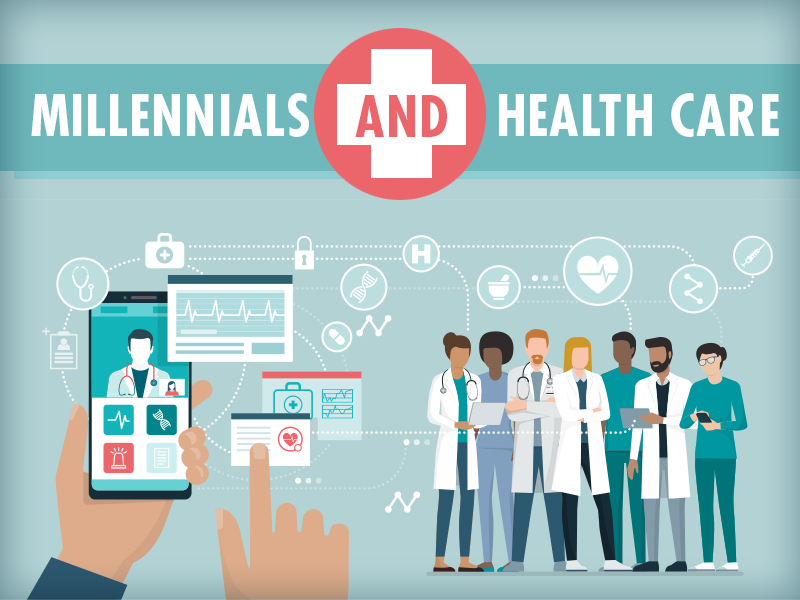
Ann Phelps of Jackson belongs to a generation that’s as mobile as the multitude of apps they created.
Generally considered the population born between 1981 and 1996, Millennials came up with Uber, Airbnb, Groupon, Tinder, Spotify, Facebook, Instagram, Snapchat and more, enabling users to scratch an itch for speedy connections in pursuit of a variety of needs and wants.
That appetite for convenience and quick service is affecting the delivery of health care as significant numbers of young adults, including Phelps, are rejecting a long-term commitment to a regular, primary care physician in favor of walk-in treatment centers, such as urgent care and retail clinics.
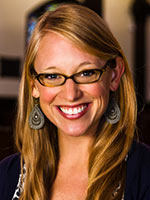
“When my primary care doctor moved away, finding a new one was really challenging,” said Phelps, 34, referring to her former internal medicine specialist. “There were so many hoops to jump through, so I never got another one to replace her.
“And, because I travel so much, half the time when I’m sick, I’m not in town; so it’s easier to visit an urgent care clinic than to wait until I’m back home.”
Like many in her age group, Phelps has moved around. “We, as a generation, are very mobile,” she said. “So, if we know we’re going to live in a town two or three years, tops, it makes sense to use these clinics rather than look for another physician.”
Because Millennials number some 83 million – the largest of the current U.S. peer groups – whatever they do can have a meaningful impact on whatever they do it to.
Retail wind
This is one of the things they do, or don’t do: Get a regular doctor – at least not as often as their elders. A 2017 survey showed that 67 percent of Millennials have one, compared to 85 percent of those ages 50 to 64.
“Millennials, young adults in general, value relationships, but they also tend to be very pragmatic,” said Dr. David Norris, associate professor of family medicine at the University of Mississippi Medical Center.
“So the doctor-patient relationship might be more casual; they might be likely to jump from one doctor to another: ‘I don’t have to see my doctor. Just a doctor.’”
In other research, Millennials are mixed in with a population identified as “young adults.” In 2016, the Rand Corp. released a report showing that, at a rate of 43 percent, patients between the ages of 18 and 44 were most likely to use retail clinics, most of which were operated by CVS and Walgreens.
While an urgent care center is owned by a hospital, group of doctors or investors, a retail, or “minute” clinic is located in a retail store with an on-site pharmacy. You may find one in a Target, Walmart, Kroger, RiteAid or other businesses.
Take-home points from the report:
- Typical retail clinic patients were young adults who didn’t have a primary care provider.
- The quality of care for a “select group” of conditions was comparable to that of “other settings.”
- Acute respiratory infections accounted for 60 percent of all retail clinic visits. Other common reasons: immunizations, sports physicals, minor ailments and screenings for such conditions as diabetes.
- The presence of retail clinics did not discourage ER visits.
- Clear pricing was one of the reasons these clinics were growing.
Urgent care centers have a physician on staff and, often, a nurse practitioner or physician assistant, nurse and radiologist. They may handle some problems that are more serious than a retail clinic would, such as suspected fractures. They have extended and, usually, weekend hours.
Patients are likely to see a nurse practitioner at a retail clinic, which offers walk-in service, weekend and evening hours and short wait times. You don’t have to belong to a particular generation to want that.
Generation text
After Dr. Thais Tonore left her private practice, most of the patients who followed her to UMMC are now 50 and up.
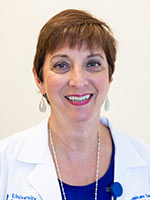
“Predominantly, the patients I see are 40 to 65,” said Tonore, professor of family medicine, who has been a physician for four decades. “I’ve established relationships with them.”
Young adults, compared to older ones, she said, are more comfortable having “relationships with texts.”
As a family medicine physician, Tonore practices one of the primary care specialties available at the Medical Center. The others are internal medicine, internal medicine/pediatrics, general, pediatrics, general obstetrics-gynecology, geriatrics or gerontology, and lifestyle medicine.
Nationwide, the Rand research showed, 18- to 44-year olds made up only 23 percent of patients who visited primary care physicians. Only about one-third of clinic users said they regularly visited one.
This year, the Kaiser Family Foundation found that only 18 percent of people ages 50 to 64 did not have a primary care provider; the rate fell to 12 percent for those 65 and older.
There’s a good reason for that, Tonore said. “In the older days, when we lived in smaller communities and didn’t move around as much, you had that doctor who knew you. You went to school with his or her kids.” This is what older generations are used to.
By contrast, the Kaiser report showed, 28 percent of 30- to 49-year-olds did not have a primary care provider; for those between the ages of 18 and 29, it was 45 percent – almost four times the rate for patients 65 and up.
“Today, we don’t even know our neighbors,” Tonore said. “We don’t have the social relationships that we used to have.”
Chronic fatigue
So, what does it matter? What are the advantages of having a regular, primary care physician, as opposed to the clinics providing acute care for busy walk-ins?
“I don’t want to disparage the acute care clinics,” said Dr. Molly Clark, associate professor of family medicine and a board-certified psychologist.
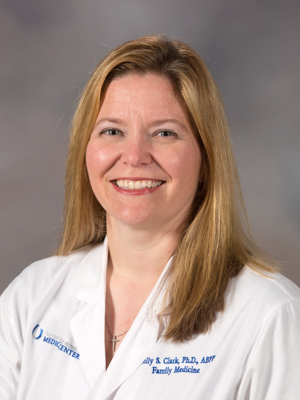
“I do believe there is value in people getting treatment when they need it. I believe family medicine clinics and primary care are adapting because of them. But, sometimes efficiency doesn’t equal effectiveness.
“Acute care clinics aren’t set up to handle chronic conditions,” she said, referring to such illnesses as diabetes, asthma and arthritis. “The nature of some of these clinics is they’re one-and-done, with no routine follow-up.
“To see someone as quickly as they do, their model is not set up to handle the wide range of problems we see here.”
For her part, Phelps, as a mother of a baby and a toddler, does have an OB-GYN physician. She even got a flu shot from her children’s pediatrician. And she does foresee a day when she will see a primary care physician regularly for her health care.
For now, though, she takes advantage of a handy urgent care center for minor ailments.
“The combination of the relative level of good health for Millennials and our mobile lifestyle lends itself to the need for a more flexible approach to health care,” Phelps said. “For me, an urgent care clinic is a quicker solution than finding a new doctor every two or three years.
“I trust the care provided by nurse practitioners. And I’m a fairly healthy person. I don’t have to talk about such things as diabetes and high blood pressure.”
Slowing pains
Good health is a good point, Clark said.
“Millennials are health-conscious. We see that emphasized in school systems, where changes to vending machine snacks have been made. So, they may not need as much care as our previous generations.
“Also, you can get an app for nutrition that is free. When I was growing up, I had to mail a letter just to talk to a friend. There was no email. And when it came to the telephone, I had a party line.
“But here’s the thing I believe people sometimes miss: There are primary care physicians and family docs who know what your issue is even before they see lab results. That’s because they know you. They know things because they’ve seen you before.
“That’s what happens when you have a relationship with a physician. There’s something to be said for that continuity: ‘I know this patient and I know something is not right.’”
Urgent care clinics, must “start from scratch,” Tonore said. “The patient’s history is not there.
“When you don’t go to someone regularly, you may be developing a condition no one has noticed; no one puts together the trend for, say, blood pressure readings.”
People who see a family physician regularly are less likely to make trips to the ER, Norris added. “And there is good evidence that having one improves outcomes,” he said.
“I know my patients’ personalities and who they would jibe with. There is no specialist I wouldn’t recommend, but there are certain patients I wouldn’t send to certain specialists.
“I know how to match patients to other physicians. And a match is a predictor of good outcomes.”
And it hurts less, he said, pointing to these findings: When you have a trusting relationship with a doctor, your pain level drops.
Wait adjustment
Still, the number of walk-in clinics is growing. Urgent care centers number more than 8,000, and at least 500 more are expected to open in 2019, says Consumer Reports.
As for retail clinics, around 2,800 or more have popped up in the United States. Most are in the South and Midwest, the Rand Corp. research showed. For about 35 percent of the U.S. urban population, it’s just a 10-minute drive to one.
Clark believes the large number in the South is a symptom of the region’s culture and economy. “We don’t see a doctor unless our arm is falling off,” she said.
“Also, look at the poverty level in this state: Our patients can’t afford to miss work. The attitude is ‘can I just get a BAND-AID on it and get back to work? I have to worry about putting food on the table.’
“We even see this with younger people who many not go to college; they have a job, but may not have health insurance.”
No wonder many people turn to clinics advertising convenient hours, fast service and price transparency.
Even so, patients may find it’s easier than ever to get an appointment with a primary care doctor. Whether this is mainly a riposte to the walk-in clinics is debatable, but it’s clear that the watchword is accessibility.
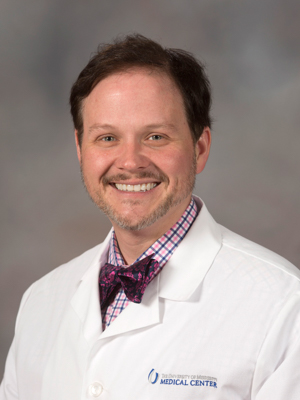
“In family medicine, we are always making efforts to accommodate patients,” Norris said. Among the reasons for the changes, he said, is this: “It’s the right thing to do.”
At Flowood Family Medicine Clinic, where Norris practices, those measures include extending hours, streamlining the check-in gauntlet, shortening the time to make new-patient appointments and accepting same-day appointments when possible.
Patients who see physicians and other health care providers at UMMC can ask them questions, schedule certain procedures and view their medical records, all through the web portal MyChart.
At Lakeland Medical Center, where Clark sees patients, 7 a.m. clinics are standard, and evening appointments are in the works.
Lakeland also offers same-day appointments and “nurse-only” visits – for colds, urinary tract infections, blood pressure checks, etc. Results determine if a patient needs to follow up with a doctor. It saves time, including waiting-room time.
“All this is not just a Millennials issue,” Clark said. “We are trying to reach out to more people, to change the model from chronic to preventive care.”
Reaching out to young adults can be a challenge, Tonore said. For one thing, they may be too healthy for their own good, although she might not put it quite that way.
“When you’re young, you’re invincible,” she said. “But there will come a time when you will have a physician who will be on the journey with you until the end of life.
“I’ve had certain patients for 40 years, and I can’t leave them to someone else.”


